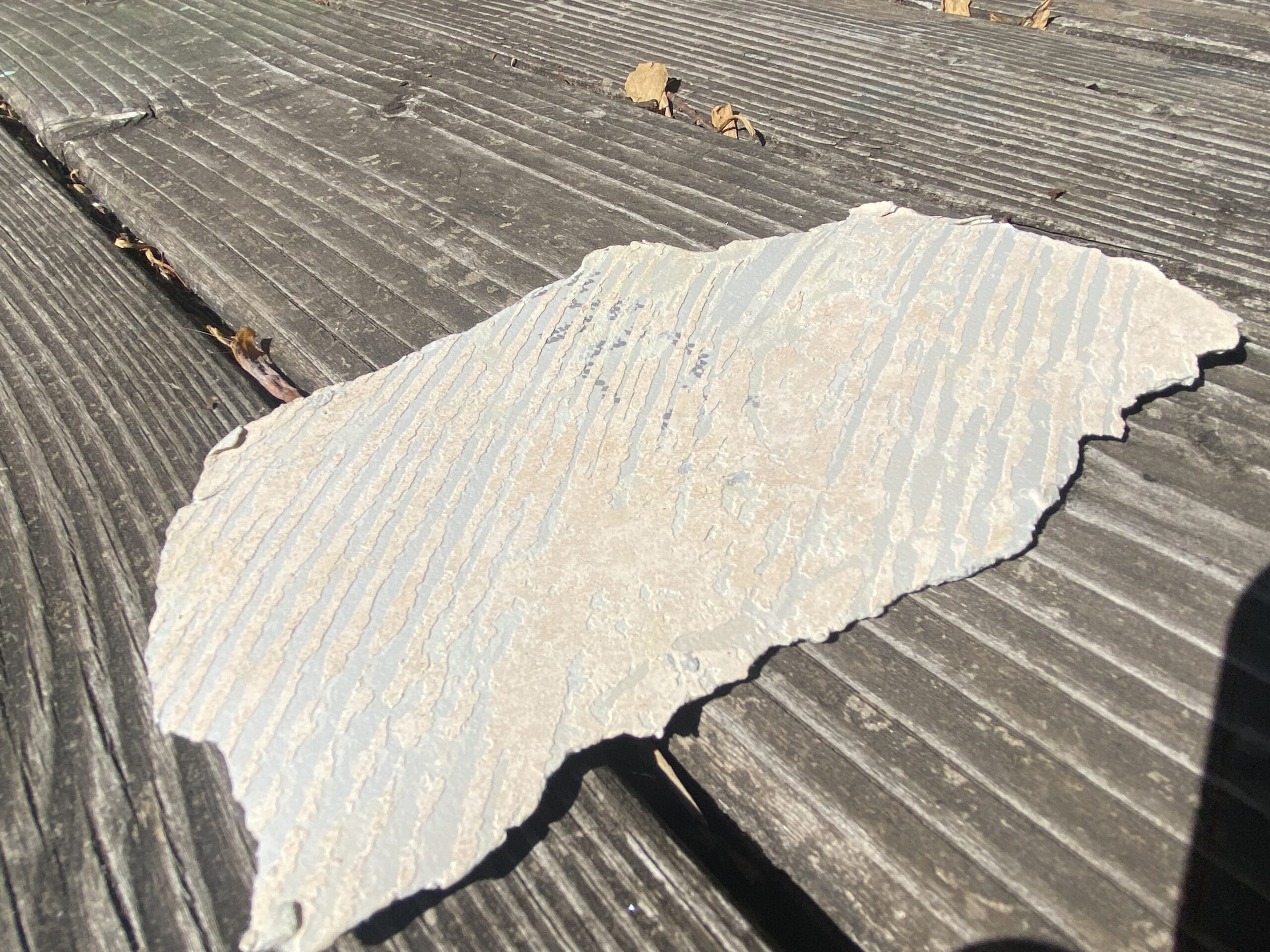XRF test results for vinyl floor sample sent in by Amy in Alabama
For those new to this website:
Tamara Rubin is a federal-award-winning independent advocate for consumer goods safety and a documentary filmmaker. She is also a mother of Lead-poisoned children, her sons were acutely Lead-poisoned in 2005. Since 2009 Tamara has been using XRF testing (a scientific method used by the U.S. Consumer Product Safety Commission) to test consumer goods for toxicants (specifically heavy metals), including Lead, Cadmium, Mercury, Antimony, and Arsenic. All test results reported on this website are science-based, accurate, and replicable. Items are tested multiple times, to confirm the test results for each component. Tamara’s work was featured in Consumer Reports Magazine in February of 2023.
Published: July 13, 2023 — Thursday
Unfortunately, not much is known about this sample (manufacturer/age, etc.) but perhaps the test results will shed light on tiny floor samples that have a similar pattern or color. If Amy shares any additional identifying information with me, I will update this article.
Reading #1) Patterned Surface of Sample
60-second test (repeated multiple times to confirm results)
- Lead (Pb): 14 +/- 4 ppm (safe by all standards)
- Cadmium (Cd): non-detect / negative
- Tin (Sn): non-detect / negative
- Mercury (Hg): non-detect / negative
- Selenium (Se): non-detect / negative
- Barium (Ba): non-detect / negative
- Arsenic (As): non-detect / negative
- Chromium (Cr): 141+/- 93 ppm
- Antimony (Sb): 53 +/- 11 ppm (known carcinogen, no limits set for flooring)
- Nickel (Ni): 29 +/- 18 ppm
- Zinc (Zn): 424 +/- 22 ppm
- Iron (Fe): 101 +/- 45 ppm
- Chlorine (Cl): 360,000 ppm
- No other metals were detected in consumer goods mode.
Second Reading of Front
- Lead (Pb): 9 +/- 4 ppm
Third Reading of Front
Sample folded in half to achieve 2x thickness
- Lead (Pb): 30 +/- 8 ppm
Reading #2) Glue on the Back of the Sample (test done on area where glue is thickest)
60-second test (repeated multiple times to confirm results)
- Lead (Pb): 12 +/- 7 ppm (safe by all standards)
- Cadmium (Cd): 25 +/- 5 ppm (safe by all standards)
- Tin (Sn): 20 +/- 7 ppm
- Mercury (Hg): non-detect / negative
- Selenium (Se): non-detect / negative
- Barium (Ba): non-detect / negative
- Arsenic (As): non-detect / negative
- Chromium (Cr): non-detect / negative
- Antimony (Sb): 93 +/- 11 ppm
- Nickel (Ni): 597 +/- 61 ppm
- Zinc (Zn): 282 +/- 24 ppm
- Titanium (Ti): 9,534 +/- 975 ppm
- Niobium (Nb): 609 +/- 20 ppm
- Indium (In): 34 +/- 6 ppm
- Iron (Fe): 17,800 +/- 500 ppm
- Platinum (Pt): 42 +/- 6 ppm
- No other metals were detected in consumer goods mode.
Some additional reading that may be of interest
- More testing on Vinyl that we have done
- More examples of flooring we have tested
- An archive for tile samples we have tested
- The link to this website’s “Menu”
~ End ~


Never Miss an Important Article Again!
Join our Email List











What is Antimony? I have relatively high amount in a toxic metal stool test recently. Nobody seems to know.
It’s a toxic heavy metal that is a known carcinogen and is often used in place of Lead for applications where Lead was used historically (crystal, flame retardants, etc.)
Do you have any recommendations for where I can send in a vinyl tile sample? There are lots of options for asbestos testing of this material, but not lead that I’ve found.
I have vinyl shelf lining in my kitchen drawers. How do I remove them safely? Will it create lead dust if I peel them off of the drawers?
Tamara, will you please help me on how to remove these safely from the drawers, and do I need to then wipe the drawers out with something before putting the dishes back?